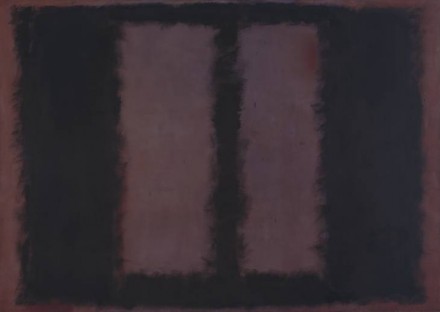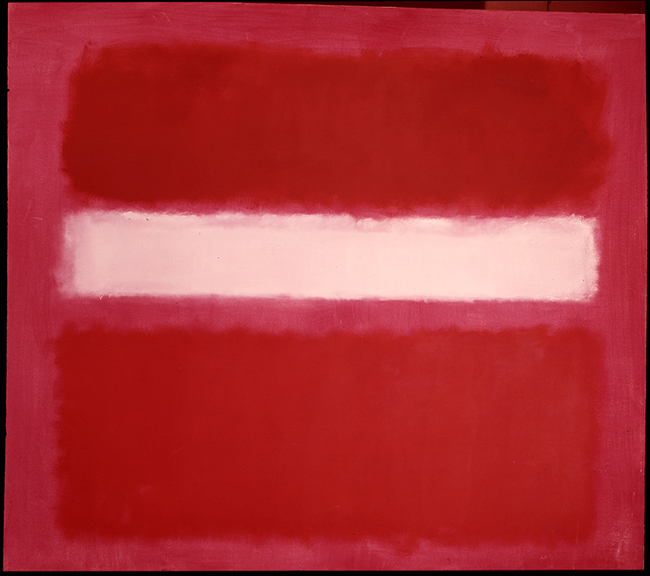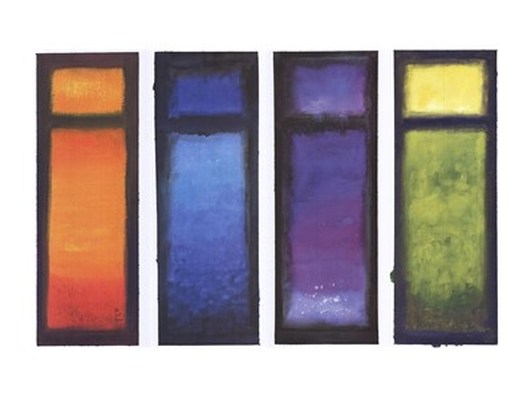|
"I’m not an abstractionist. I’m not interested in the relationship of color or form or anything else. I’m interested only in expressing basic human emotions: tragedy, ecstasy, doom, and so on." Mark Rothko Yesterday a man sat gazing at a painting by Mark Rothko at Tate Modern. After a while he took out a bottle of paint and a brush and added an illegible scrawl to a corner of the painting. Only a single word – Vladimir – was recognisable. Under the gaze of a gallery full of people he left and, so far, has not been found by the police. The painting was one of a series created by Rothko in the 1960s to hang in the restaurant of New York’s Seagram building. Rothko had grown increasingly unhappy with the commission (probably realising that he was pouring his feelings into creating high class wallpaper) and, instead, generously gave the works to the Tate Gallery. For many years they hung in what is now Tate Britain at a time when his work was largely ignored (it was seen very much as an outmoded experiment in 1950s abstract expressionism) before commercial forces rehabilitated his work in the 1990s when it became, once more, “cool”. White Stripe, oil on canvas Living twenty miles from London and loving the Tate Gallery, I would often find myself alone with Rothko’s wonderful pictures absorbing the deep colours and fractured boundaries between the floating veils of pale paint, finding a place of peace and an inner sense of self. For me these paintings did everything great art should be able to do. I was fascinated by Rothko’s work and eventually produced a series of works in a tribute to his style, one of which, Four Meditations, became a successful print. Four Meditations, gouache on paper However, it appeared that Vladimir was not the only critic of Rothko’s style. After the print had been in circulation for a few years an American blog appeared – a sort of art list – which named Four Meditations as the worst painting of the year. The reviewer heaped scorn on the work and also bemoaned the fact that some sucker had paid “thousands of dollars” for the painting. Quite apart from the fact that it had never sold (I still have it in the studio) I was puzzled why anyone should want to criticise the work but began to get the smallest inkling of how Rothko's sensitivity blossomed into full scale paranoia when much of the American art establishment turned their fire on him. A few years ago the printmaker Hester Cox gave me a beautiful book about Rothko’s last years. As depression and paranoia consumed him the colours and life bled out of the paintings. The luminous, ragged shapes give way to plain fields of greys and blacks divided by a single bleak line. Inevitably he painted himself psychologically into a corner from which suicide was the only way out. His death robbed us of an artist who could connect the medieval mystical art of cathedral shadows with trascendant abstract colour fields on the white walls of modern galleries, bringing meditation and introspection into the blinding rush of a contemporary metropolis. And now his his work has been deliberately damaged by a stranger’s handiwork as Velazquez’s Rokeby Venus and Rembrandt’s Night Watch have been in the past. If only the passion to damage and debase art were channelled into the creation of new, enlightening, original work the world would be enriched. Might Vladimir consider this before taking out his bottle and brush again? Unfortunately I doubt it. If you would like to receive my monthly newsletter on art, artists and exhibitions (October's edition is in preparation) please CLICK HERE to visit my Facebook page and press the "Sign up for my Newsletter" button.
0 Comments
Leave a Reply. |
Archives
June 2024
|


